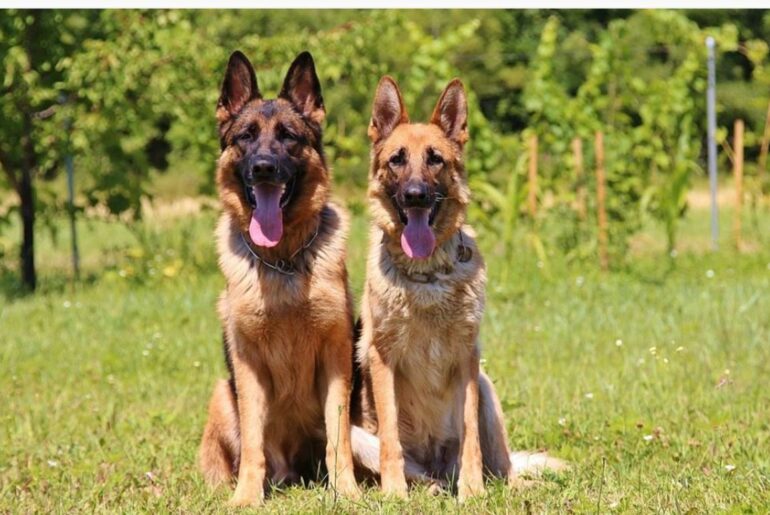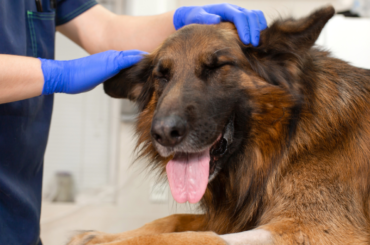Breeding German Shepherds is a responsible undertaking that requires careful consideration of various factors, including the age of the breeding pair. Determining the suitable age for German Shepherd breeding is crucial for the health and well-being of both the parent dogs and their offspring. In this comprehensive guide, we’ll explore the optimal age for German Shepherd breeding, considering physical and reproductive maturity, health considerations, and ethical breeding practices. Practical examples and insights from experts will shed light on the key considerations for prospective breeders.
Physical and Reproductive Maturity:
-
Age of Sexual Maturity:
- German Shepherds, like many dog breeds, reach sexual maturity at different ages. Female German Shepherds typically enter their first heat cycle between six months and two years of age. However, it’s essential to note that sexual maturity does not equate to full physical and emotional readiness for breeding.
-
Complete Skeletal Development:
-
German Shepherds are known for their strong and well-developed bodies, but their skeletal system continues to mature until around two years of age. Breeding before the completion of skeletal development can increase the risk of structural issues in the offspring.
-
Example: A female German Shepherd may reach sexual maturity at 18 months, but waiting until she is at least two years old ensures that her skeletal structure is fully developed before breeding.
-
-
Reproductive Health:
- Both male and female German Shepherds should be in optimal reproductive health before breeding. This includes regular veterinary check-ups to assess their overall health, fertility, and freedom from genetic conditions that could be passed on to the offspring.
Health Considerations:
-
Screening for Genetic Conditions:
-
Responsible breeding involves screening potential breeding dogs for genetic conditions common in the German Shepherd breed. This screening helps prevent the transmission of hereditary diseases to the next generation.
-
Before breeding, a male and female German Shepherd should undergo genetic testing for conditions such as hip dysplasia, elbow dysplasia, and degenerative myelopathy.
- Weight and General Health:
-
-
Both male and female dogs should be in good physical condition before breeding. Maintaining a healthy weight and providing a nutritious diet are crucial factors that contribute to the overall health of the breeding pair.
-
Example: Regular exercise, a balanced diet, and routine veterinary check-ups contribute to the general health of a breeding German Shepherd.
-
-
Breeding as a Responsible Steward:
-
Responsible breeding involves understanding the breed standard, promoting positive traits, and avoiding practices that contribute to genetic issues. Breeding should be carried out with the goal of improving the breed rather than merely producing puppies.
-
A responsible breeder aims to enhance the breed’s qualities, such as intelligence, temperament, and physical conformation, through selective breeding practices.
Ethical Breeding Practices:
-
Understanding the Heat Cycle:
-
Female German Shepherds experience their first heat cycle, also known as estrus, typically between six months and two years. Breeding during specific phases of the heat cycle is essential for successful mating and conception.
-
Example: A breeder observes the female’s behavior and physical signs, such as swelling of the vulva and changes in discharge, to determine the optimal time for breeding during the heat cycle.
-
-
Age Considerations for Males:
-
While females are often the focus of breeding discussions, the age of the male is equally important. Mature males with fully developed reproductive systems contribute to successful breeding outcomes.
-
A male German Shepherd that has reached at least two years of age demonstrates optimal reproductive health and maturity.
-
Avoiding Early Breeding:
-
Early breeding, before the age of two, is generally discouraged to allow for complete physical development. Breeding too early can result in complications during pregnancy and an increased risk of health issues in both the mother and the puppies.
-
Example: A breeder decides to wait until the female German Shepherd is at least two years old before considering her for breeding, ensuring she has reached full physical maturity.
-
Conclusion:
Breeding German Shepherds is a significant responsibility that requires a thoughtful and ethical approach. Determining the optimal age for breeding involves considering various factors, including physical and reproductive maturity, overall health, and adherence to responsible breeding practices. Practical examples illustrate the importance of waiting until both male and female German Shepherds are in optimal condition before embarking on the journey of bringing new generations into the world. By prioritizing the health and well-being of the breeding pair, breeders contribute to the long-term vitality and quality of the German Shepherd breed.






